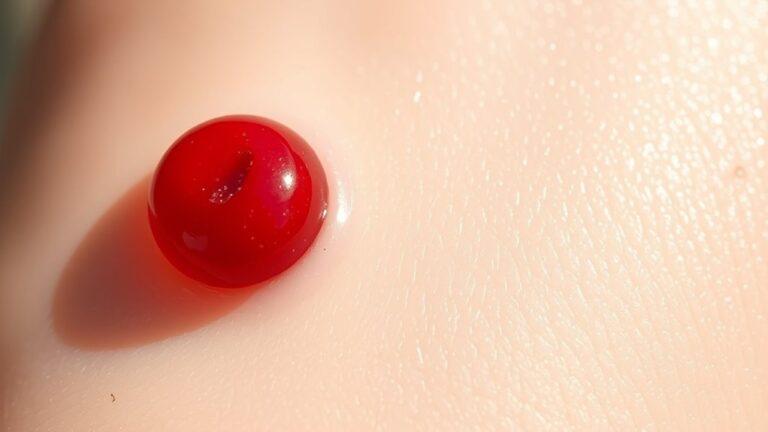In case you’ve ever come across thick, yellowish fluid draining from a wound, you’ve encountered purulent drainage. This gooey byproduct usually means a bacterial infection, and comprehending the causes, like contaminated wounds or even diabetes, can be vital. Not only can it be uncomfortable, but it can also lead to serious complications in case not managed properly. Stick around, and we should examine how to tackle this issue head-on, along with effective infection control measures that can make a world of difference.
What Is Purulent Drainage?
Purulent drainage, often seen as a thick, pus-filled fluid, can be a concern as soon as it appears from a wound or lesion on your body. This type of drainage typically indicates an infection, as it comprises dead white blood cells, bacteria, and tissue debris, forming pus as part of your immune response.
Unlike the clearer, less viscous serous drainage, purulent fluid usually has a foul odor, a clear sign that bacteria are at work. Common offenders like *Staphylococcus aureus* or *Streptococcus* can cause this discomforting situation.
It’s vital to seek medical evaluation if you notice purulent drainage; tackling it promptly can prevent complications like cellulitis or even sepsis, safeguarding your health effectively.
Common Causes of Purulent Drainage
Once you observe pus emerging from a wound or lesion, it can be disconcerting and may prompt you to ponder what triggered it. Common causes include bacterial infections like *Staphylococcus aureus* and *Pseudomonas aeruginosa*, which often give pus a thick, discolored appearance.
Contaminated wounds, whether from foreign objects or dirt, introduce these bacteria, leading to infection. Delayed wound care, stemming from poor hygiene or ignoring injuries, increases the risk of pus production.
Abscess formation can trap pus, requiring drainage for resolution. Additionally, foundational conditions like diabetes or immunodeficiency can hinder healing, making you more susceptible to infections with purulent drainage.
Grasping these causes can help you address any wounds more effectively and seek timely medical help.
Risk Factors for Developing Purulent Drainage
Upon considering the factors that could put you at risk for developing purulent drainage, several key elements come into play. Should you be immunocompromised, like those with HIV or undergoing chemotherapy, your risk increases through 30–40% due to weakened infection resistance.
Diabetics face a 2–3 times greater chance of infections leading to purulent drainage, with impaired circulation and immune function playing a big role. Smokers, too, are at a 50% higher risk of non-healing wounds.
Additionally, wound type matters—deep or jagged cuts raise infection rates via 15–20%. Finally, contaminated wounds from bites or dirty objects can lead to a 25–35% higher incidence of bacterial infections, making it essential to stay vigilant about wound care.
Symptoms Indicating Purulent Drainage
Wound care can feel overwhelming, particularly in case you’re monitoring symptoms that could suggest purulent drainage. It’s essential to recognize the signs promptly to manage your health effectively.
Look out for these symptoms:
- Thick, milky fluid that can be white to yellow, green, or brown.
- A foul odor indicating possible infection.
- Increased pain, redness, or warmth around the wound.
- Persistent drainage that changes color or consistency.
In case you notice any fever or chills, it’s critical to seek medical attention. These signals often indicate that an infection is developing or spreading.
Staying aware and proactive can help you manage this situation better while easing your concerns.
Infection Control Measures for Purulent Drainage
At moments you’re handling purulent drainage, it’s vital to keep wounds clean and monitor for infection signs.
Cleansing with sterile saline or a mild antiseptic helps remove harmful bacteria while protecting healthy skin.
Through staying vigilant with proper wound care, you can markedly reduce the risk of complications and promote healing.
Proper Wound Cleaning Techniques
Caring for a wound is like nurturing a plant; it thrives with the right attention and environment. To guarantee proper wound care and promote healing, follow these steps:
- Clean the wound with sterile saline or mild soap and water.
- Use antiseptic solutions like chlorhexidine for deeper infections.
- Debride any necrotic tissue using sterile instruments.
- Apply antimicrobial dressings, such as those with silver or honey.
Regular dressing changes are vital, so always sanitize your hands and tools to prevent infection.
Through grasping wound hygiene, you strengthen your skin’s healing process and boost your general health.
Keep in mind, every small action contributes substantially, making your commitment to wound care an essential part of your path to recovery.
Monitoring for Infection Signs
After you’ve attended to the cleaning and dressing of your wound, the path to recovery isn’t quite over yet. You need to keep an eye out for signs of infection.
Check for increased redness, swelling, or warmth around the wound, as these can indicate worsening conditions. Pay attention to the color and odor of the wound drainage; in case it changes to yellow, green, or brown, or starts to smell foul, it could be infected.
Monitor for delays in healing or worsening pain, which can signal complications like cellulitis. Should you notice fever or chills, contact your healthcare professional.
Staying vigilant helps guarantee your healing process remains on track and reduces the risk of infected wounds.
When to Seek Medical Attention
Identifying when to seek medical attention for purulent drainage can feel overwhelming, but comprehending the signs can make a significant difference in your health. Pay attention to these warning signs:
- Fever (100.4°F or higher), chills, or worsening pain
- Drainage lasts longer than 48 hours despite good care
- Red streaks radiating from the wound
- Drainage color changes or develops a foul odor
In case you experience any of these symptoms, don’t hesitate to consult a healthcare provider or medical professional for advice.
Prompt medical intervention is essential, especially should you’re immunocompromised.
Ignoring these signs can lead to serious issues, and an infection might become chronic unless addressed properly. Your health matters, so stay informed and proactive!




